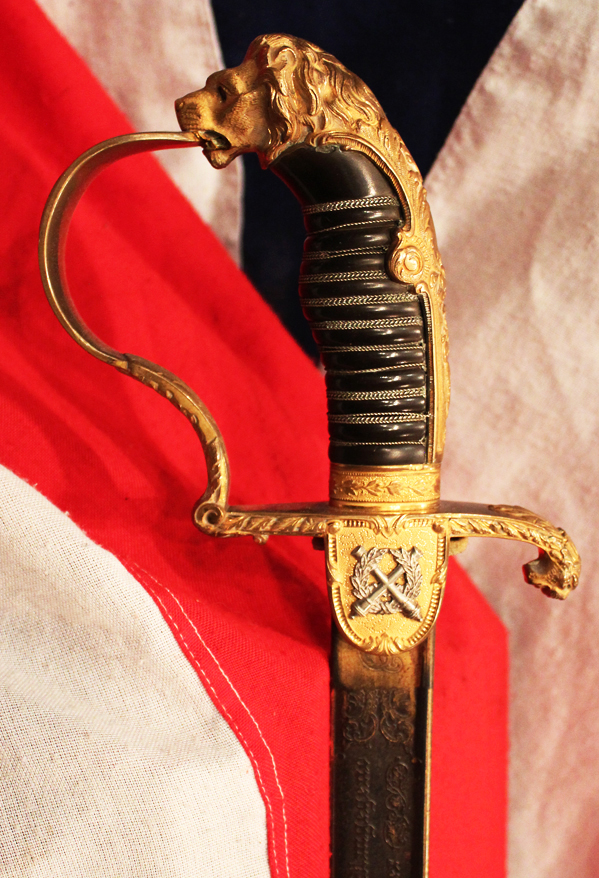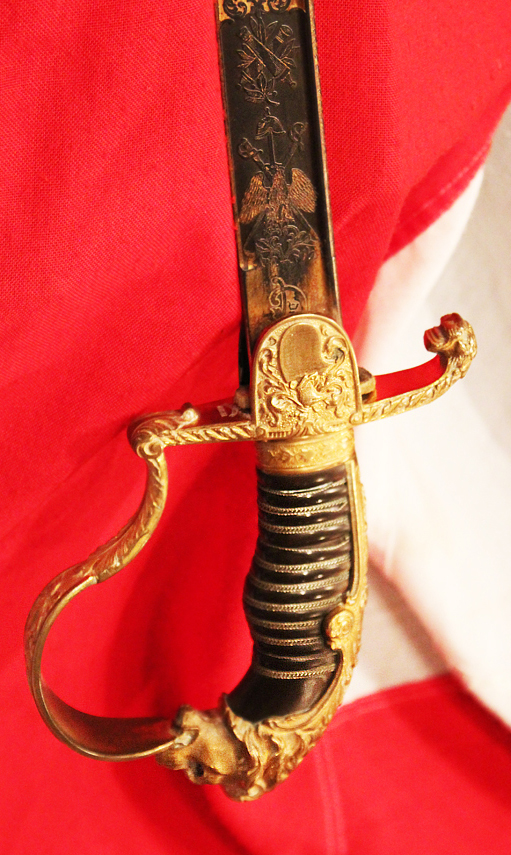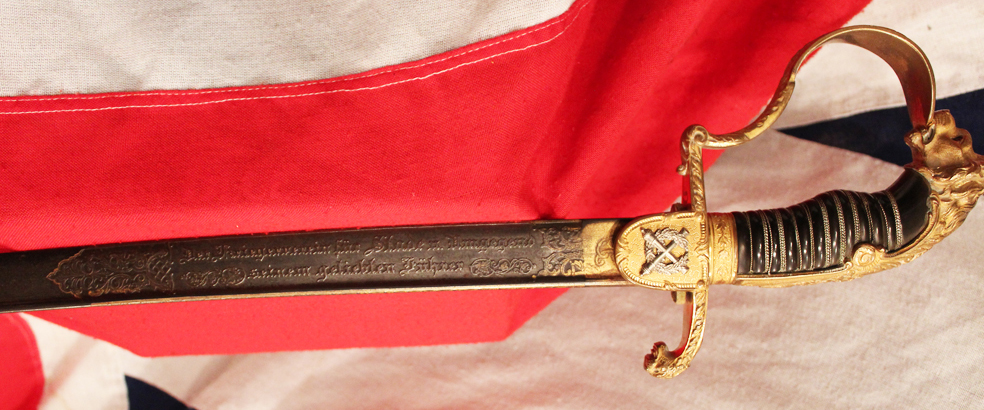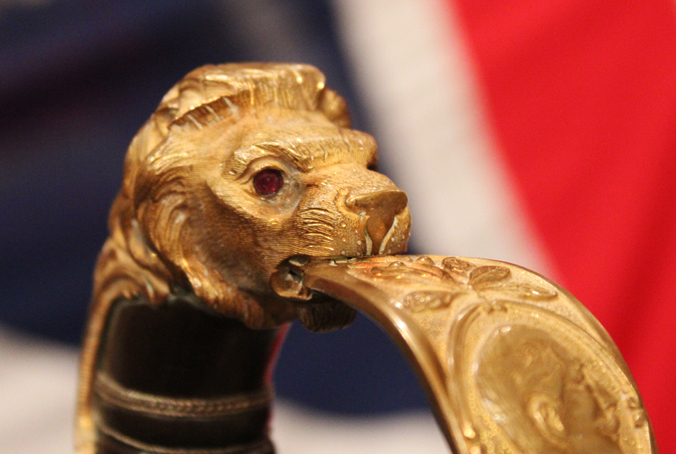An Original, Incredibly Rare 'Damascus' Presentation Sword, Presented to the German Fuhrer of 1898, An Imperial German, Damascus Steel, Blue & Gilt, Presentation Fuhrer's Sword. Set With Genuine Rubies and Silver Crossed Cannon
This is a magnificent example of one of the rarest most desirable and valuable German swords made in 200 years. The highest grade possible of German military sword to be commissioned during the 19th and 20th centuries, encompassing the Imperial, Weimar and Third Reich eras of Germany.
This fabulous sword was presented to the ‘Fuhrer’ of 1898, but that was not the last, far more infamous German ‘Fuhrer’ who achieved that title, the notorious Adolf Hitler. After Hitler, the title Fuhrer, as an esteemed German rank of status and unlimited authority, became forever tainted, and thus it died with him, never to be used again (although, it was said, that Angela Merkel’s bodyguard referred to her as this (allegedly) in private. but, likely as a term of comedic endearment). Before his death in 1945, the highest level of ‘Fuhrer’ represented a highly respected and revered military and political rank in all Germany.
A 'Grosse Degan', translates to the ‘great size sword’ is around 50% heavier, wider and substantial, and a far superior quality than the regular officer’s sword of the day. Presented in the late 19th century, these significant and important Damascus swords were effectively, the swords of Kings, worn by the highest ranking officers Generals, Field Marshals, Dukes and Kings right through WW1 and also WW2. For example we show in the gallery Field Marshal von Kleist with his identical family sword, that was also an antique Imperial sabre, but worn by him in WW2.
Also, a photograph of His Majesty King George Vth the Queen's grandfather and Kaiser Wilhelm of Prussia King George's cousin in their ceremonial Colonel-in-Chief uniforms. King George Vth is in his full dress ‘honorary’ Imperial German uniform with pickelhaub helmet and also wearing his identical grade of ‘Fuhrer’ sword to ours. Before WW2 it was common for foreign kings to be made honorary colonels to other countries regiments. For example until WW1 Kaiser Willhelm was an honorary colonel of a British regiment, the Kaiser’s Own.
The presentation inscription on the sword’s highest grade elite Damascus blade approximately translates to
"Given By The War Veterans of Stade to it's Beloved Fuhrer"
Super quality hilt with fine detailed chiselling of a lion's head pommel with genuine rubies for eyes the rubies were examined and confirmed by our gemologist. The quillon terminal is a further head of a lion, and the langet is mounted with a wreathed pair of crossed cannon. Silver wire bound horn grip and the knucklebow bears a portrait bust of the German Kaiser, Queen Victoria’s grandson.
The blade is further marked ‘Damast’. Damascus steel swords were the rarest and most highly prized swords ever made in Germany. A method of creating the finest possible steel, a method that was almost lost after WWI however, Reichmarshall Herman Goring made it his personal task, in the 1930’s, to find the finest blade smiths in Europe and to recreate the lost art of Damascus steel for his finest blades. He succeeded, and those surviving German Damast steel edged weapons, also embellished with gold, such as this sword, are now some of the most valuable ever produced during the 20th century.
Wilhelm II or William II (German: Friedrich Wilhelm Viktor Albrecht von Preu?en; Frederick William Victor Albert of Prussia; 27 January 1859 4 June 1941) was the last German Emperor (Kaiser) and King of Prussia, ruling the German Empire and the Kingdom of Prussia from 15 June 1888 to 9 November 1918. Wilhelm was born on 27 January 1859 at the Crown Prince's Palace in Berlin to Prince Frederick William of Prussia (the future Frederick III) and his wife, Victoria, Princess Royal, the eldest daughter of Britain's Queen Victoria. At the time of his birth, his great-uncle Frederick William IV was king of Prussia, and his grandfather and namesake Wilhelm was acting as Regent. He was the first grandchild of Queen Victoria and Prince Albert, but more importantly, as the first son of the Crown Prince of Prussia, Wilhelm was from 1861 second in the line of succession to Prussia, and also, after 1871, to the newly created German Empire, which, according to the constitution of the German Empire, was ruled by the Prussian King.
Crowned in 1888, he dismissed the Chancellor, Otto von Bismarck, in 1890 and launched Germany on a "New Course" in foreign affairs that culminated in his support for Austria-Hungary in the crisis of July 1914 that led in a matter of days to the First World War. No Scabbard.
Code: 22370
7995.00 GBP










